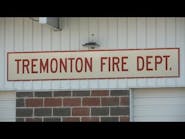There’s a burning inside of me. A burning I can’t describe at times. A burning to lead with passion and follow the mantra, “It’s not who’s right, it’s what’s right.” If I’m wrong, I’m wrong, and I will be the first one to own up to that. As a leader, ask yourself, do you own up to mistakes and allow other people’s ideas to overtake yours because they are actually better, or do you hang on to the fact that you are the leader, and as one chief officer told me on one occasion, “It’s good to be in charge.” Besides almost falling out of my chair when I heard this statement coming from a leader, I was appalled that these words could be spoken by someone who is setting an example for others to follow. Yes, it’s good to be a leader, but only when you’re serving your people and doing what is right for them based on educated decisions with facts—not just the color of your shirt.
Unfortunately, for generations in the fire service, the color of a firefighter’s shirt designated him or her as all-knowing, even if said person did not follow national best practices, did not evolve their department or, more importantly, did not lead their employees by serving them. At the end of the day, leaders are in the position to serve our people by ensuring that they have what they need to be successful. We do this by allowing an environment of collaboration where the right decisions are made based on what’s right, rather than who’s right. There’s no room for ego in a profession that requires operational efficiency at all levels from top to bottom to ensure that everyone goes home. We’re not making cupcakes here. We’re saving lives in an ever-changing operational environment. The individuals with the boots on the ground, working calls, riding the rigs and doing the work in the modern environment should be focused on when a leader is making decisions to improve an organization. After all, they are what make an organization successful. History has proven this time and time again. Without followers, a leader has nothing. No followers, no progress.
The Bill Gates example
Consider Bill Gates—the gentleman credited with developing Microsoft, which has dominated the software market for over 30 years. Historically, Gates has been viewed as a visionary who was smart enough to retain the patent to his “big idea,” Microsoft. Society sees the notion of the “big idea” as an integral component to be successful. However, as explained in 3 Secrets to Bill Gates’ Extraordinary Success, research indicates that the most successful individuals stated that success required “extraordinary execution on an ordinary idea” (Schiff, 2013).
Why is this important you ask? Well, in reality, Bill Gates developed Microsoft into a billion-dollar company by “executing brilliantly, and always in service of other people’s vision, never his own” (Schiff, 2013). One more time for effect—in service of other people’s vision, never his own. Do you think he ever told his employees that it was good to be him because he was the leader? Probably not. If he did that, do you think they would want to collaborate with him? I doubt it. Do you think that he cared that he was in charge or do you think he cared that his company was successful based on the collective ideas of everyone involved in the future of the product? The quality of the product was the most important component. When his employees had processes down to a science, were operating efficiently, producing quality products, Gates did not step in unless there was a need. Could he have done things differently to produce more products quicker with less quality? Yes, of course. However, he was focused on the quality of the product and the input of his employees because he knew that when he created this environment of collaboration, everyone in the organization would feel empowered to work harder for the reputation of the company and its products.
The same goes for us in the fire service. Firefighters take pride in their organization when they are allowed to have a stake in it and change the face of the organization. Will this always be possible? Of course not. However, with the use of collaboration, the chances are increased exponentially.
So how do we create an environment focused on collaboration, and why is it important for the growth of your organization? According to Natalie Nixon, the Director of Strategic Design MBA at Philadelphia University, there are five reasons to focus on collaboration for the progression of not only your organization but also your progression as a leader.
1. Self-awareness: This allows everyone in the organization to articulate what they perform well at and, more importantly, where they need improvement. This type of honesty allows others to realize that we are all human and that at times we need to ask for help, no matter what position we are in. Yes, even the leaders of an organization.
2. Scale: Problem-solving is more effective when there are more ideas than just that of a few. Nixon writes, “More effective problem-solving happens when you combine resources in talent, experience, finances and infrastructure.”
3. Creative Abrasion: Abrasion means friction. Friction is the purest form of energy and should not be viewed as a negative. “So why not convert that energy that comes from working with people who are different from you, into something positive?” Nixon asks. “Leverage the differences and work to identify what can be complementary about them.”
4. Take the long view: Collaboration will not always work, no matter how much patience you have, how hard you try, and how great your listening skills are. Nixon advises, “Take the long view about perceived failures” and remember even if a project does fail, collaboration should still be utilized in the future.
5. Learn, learn, and learn more: Collaborating encourages your department to become “a learning organization, a popular phrase right now that refers to organizations which have cultures of ongoing learning, and structures that support that learning through safety nets for failure, and opportunities for growth in all aspects of employees' lives,” Nixon writes. Further, she says that each time your department collectively works with others, you optimize your employees’ capacity “to extend beyond their comfort zone, grow, and in turn, stretch the boundaries of the organization.”
Reflect on yourself
Now reflect on those five important components of collaboration and ask yourself if you encompass them. Or are you stuck on the fact that you have been on the job 20-plus years (and are the first one to tell others that) but don’t really have a true understanding of the modern environment firefighters operate in and, more importantly, how to lead in the multi-generational atmosphere that is present in organizations all over the world. Twenty-plus years on the job is great if you continued to stay current with the changing nature of the profession.
So which is it, do you have 20-plus years of continued learning and experience or do you have one year of experience multiplied 20 times with an outdated leadership style and tactics that don’t correlate with what the science is telling us today? You are the only one that can answer that truthfully. If you are not true with yourself in reflecting on that point, the lack of collaboration in your organization and your leadership style will unfortunately continue.
A storm is brewing
If you haven’t noticed already, there’s a storm in the fire service. It’s a storm full of firefighters and fire officers who are hungry for knowledge, improvement, better equipment, innovative tactics, as well as leaders who understand the difference in today’s fire service, not the fire service of the 70s, 80s, 90s or even the 2000s. Yes, tradition is essential for us to remember our past and honor those who have served before us and the ones who gave their lives so we could improve this profession. However, we must continue to make progress for the future of our profession.
To quote the movie Lone Survivor, “There’s a storm inside us … A burning. A river. A drive. An unrelenting desire to push ourselves further than anyone could ever think possible.” When we joined the fire service, we did just that as tailboard firefighters. However, did that burning and drive continue as you moved up the ranks, or did you get to the point when you thought it was alright to tell your followers “It’s good to be in charge”? If you don’t have that burning, that flame, that river flooding your body, that drive to lead based on the current environment and with the use of collaboration, then you’re not only hurting your firefighters, but you’re inhibiting this profession from progressing to the highest level. To lead is to serve, not to tell your followers it’s good to be you. Either join the storm or move to the golf course. Cheers.
References
Nixon, N. (2014). 5 Reasons Why Collaboration Is Essential in Today’s Business Environment. Published on August 15, 2015.
Schiff, L. (2013). 3 Secrets to Bill Gates’ Extraordinary Success. Published on February 6, 2013.

Dr. David Griffin
Dr. David Griffin is the assistant chief of administration in Charleston, SC. He was the operator of the first-due engine on June 18, 2007, when nine of his fellow firefighters perished. Griffin has come through the ranks in operations in every uniformed position, from firefighter to battalion chief and shift commander to his current position, during his 19-year career in Charleston. He has a bachelor's degree in education from The Citadel, a master's degree in executive fire service leadership, and a doctorate of education in organizational leadership and development. Griffin is the author of "In Honor of The Charleston 9: A Study of Change Following Tragedy," among three other books. He is an international speaker and instructor, a certified Chief Fire Officer and Chief Training Officer with The Center for Public Safety Excellence, an IFSAC/Pro Board-certified Fire Officer IV and a graduate of the Executive Fire Officer Program from the National Fire Academy. He is a graduate of Harvard University's Kennedy School of Executive Education program: Senior Executives in State and Local Government and of the Psychology of Leadership program at Cornell University's SC Johnson College of Business. Griffin is the owner of On A Mission, LLC, at drdavidgriffin.com.






